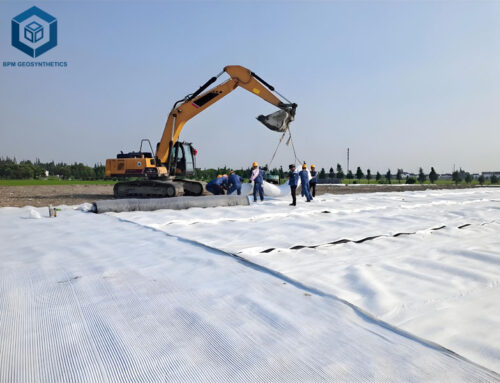Nonwoven drainage fabric, also known as nonwoven geotextile or nonwoven filter fabric, is a type of geosynthetic material specifically designed for drainage and filtration applications. It is commonly used in civil engineering, construction, and landscaping projects.BPM Geotextile is a leading geotextile manufacturer that has been devoted to product design and development, providing customers with one-stop service solutions.
1. What Is Nonwoven Drainage Fabric?
Nonwoven drainage fabric is a type of geosynthetic material specifically designed for drainage and filtration applications. It is made from synthetic fibers, such as polypropylene (PP) or polyester (PET), which are mechanically bonded or thermally fused together to form a stable, porous structure.
The material exhibits good tensile strength, puncture resistance, and durability, ensuring its effectiveness in demanding applications. Many nonwoven drainage fabrics are formulated with UV stabilizers to withstand prolonged exposure to sunlight and maintain their performance over time.
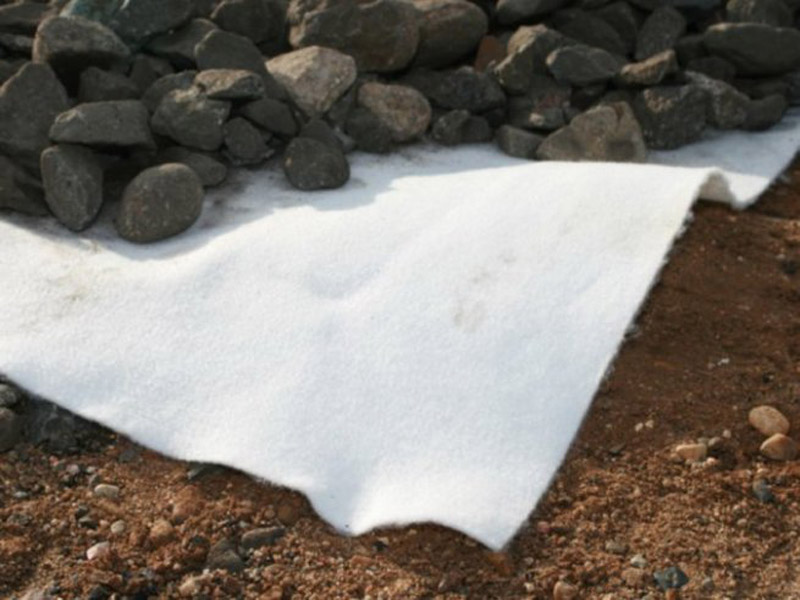
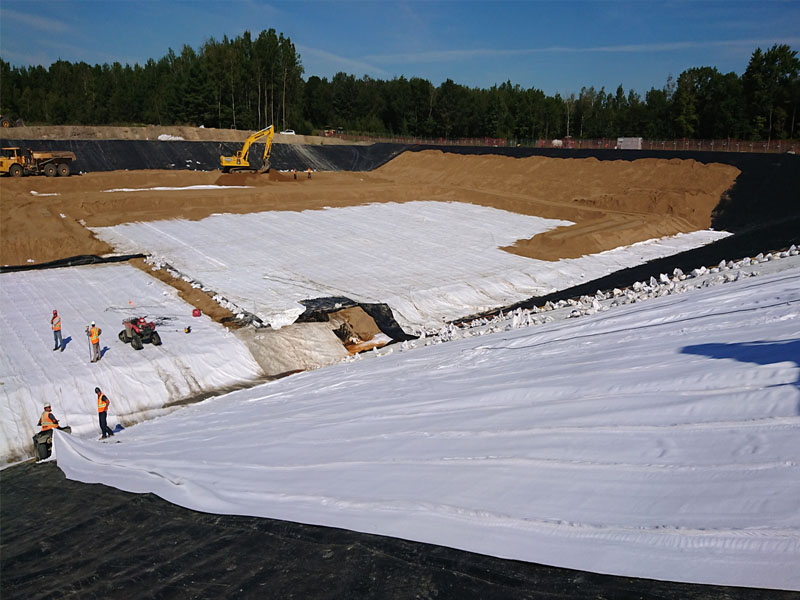
2. What Is Production Process Of Nonwoven Drainage Fabric?
The production process of nonwoven drainage fabric involves several key steps. Here is a general overview of the typical production process:
2.1 Nonwoven Drainage Fabric – Fiber Preparation
The process starts with the preparation of synthetic fibers, such as polypropylene (PP) or polyester (PET). These fibers are typically in the form of bales or pellets.
2.2 Nonwoven Drainage Fabric – Fiber Opening and Blending
The fibers are opened and blended to ensure a uniform mixture. This process may involve mechanical or pneumatic methods to separate and loosen the fibers, creating a fiber web.
2.3 Nonwoven Drainage Fabric – Web Formation
The opened and blended fibers are then laid down to form a web. This can be done using various techniques such as carding, air-laying, or meltblowing. Carding involves aligning the fibers in a parallel arrangement using carding machines. Air-laying uses a stream of air to disperse the fibers onto a moving conveyor belt. Meltblowing involves extruding molten polymer through fine nozzles to create microfibers that are collected on a moving belt.
2.4 Nonwoven Drainage Fabric – Fiber Bonding
The loose web of fibers needs to be bonded together to create a stable fabric. This is typically achieved through mechanical bonding or thermal bonding. Mechanical bonding involves passing the web through rollers or needles that entangle the fibers, creating a cohesive structure. Thermal bonding utilizes heat to melt the fibers at their contact points, creating bonds as they cool and solidify.
2.5 Finishing
After bonding, the fabric may undergo additional finishing processes to enhance its properties. This can include treatments such as calendering (passing the fabric through heated rollers to improve smoothness and surface characteristics), coating (applying a thin layer of polymer or other substances for specific functionalities), or adding UV stabilizers to enhance the fabric’s resistance to sunlight.
2.6 Quality Control and Inspection
Throughout the production process, quality control measures are implemented to ensure the fabric meets the desired specifications. This can include checking for uniformity, strength, thickness, and other relevant parameters.
3. What Are Functions Of Nonwoven Drainage Fabric?
The functions of nonwoven fabric is primarily focused on water management and soil stabilization in various civil engineering projects. Here’s a detailed overview of its key functions:
3.1 Water Flow Facilitation
Drainage fabric is designed to provide a pathway for water to flow through while preventing soil particles from being washed away. This makes it ideal for use in retaining walls, road and highway construction, railway embankments, and other similar applications where water management is critical.
3.2 Soil Stabilization
By allowing water to pass through quickly and efficiently, nonwoven fabric helps to reduce the risk of water buildup and related issues such as soil erosion, settlement, and instability. This makes it an essential component of slope stabilization systems, subsurface drains, and other soil reinforcement applications.
3.3 High Permeability
Nonwoven fabric is known for its high permeability, which allows water to pass through quickly and efficiently. This helps to ensure that water does not accumulate behind retaining walls or under pavement layers, reducing the risk of failure due to hydrostatic pressure.
3.4 UV Resistance:
The synthetic fibers used in nonwoven fabric is resistant to UV radiation, ensuring that the fabric maintains its strength and functionality over time when exposed to sunlight.
3.5 Chemical Degradation Resistance
Nonwoven fabric is also resistant to chemical degradation, making it suitable for use in environments where chemicals may be present, such as industrial sites or waste disposal facilities.
4. What Are Applications Of Nonwoven Drainage Fabric?
The applications of nonwoven fabric is diverse and span various civil engineering and construction projects. Here’s a detailed overview of its key applications:
4.1 Retaining Walls
Drainage fabric is commonly used in retaining wall systems to facilitate water flow while preventing soil erosion. It helps to maintain the stability of the wall by reducing hydrostatic pressure and preventing the buildup of water behind the wall.
4.2 Road and Highway Construction
In road and highway construction, nonwoven fabric is used to improve subgrade drainage, prevent pavement deterioration, and extend the lifespan of the road surface. It helps to reduce the risk of water-related damage such as cracking, potholes, and subsidence.
4.3 Railway Embankments
Nonwoven fabric is used in railway embankments to ensure proper drainage and prevent soil erosion, which can lead to track instability and potential derailments.
4.4 Slope Stabilization
In slope stabilization projects, nonwoven fabric is used to provide effective water management and soil reinforcement. It helps to prevent slope failure by reducing the risk of soil erosion and improving the overall stability of the slope.
4.5 Subsurface Drains
Nonwoven drainage fabric is used in subsurface drains to facilitate water flow and prevent clogging. It helps to ensure that water is effectively removed from the area, reducing the risk of water-related damage and improving the stability of the surrounding soil.
4.6 Soil Reinforcement
Nonwoven drainage fabric is used in soil reinforcement applications to provide additional strength and stability to the soil. It helps to prevent soil erosion and improve the load-bearing capacity of the soil.
4.7 Green Roofs and Roof Gardens
In green roofs and roof gardens, nonwoven drainage fabric is used to provide effective drainage and prevent water from accumulating on the roof surface. This helps to protect the roof membrane and extend the lifespan of the roof.
4.8 Foundation Drainage
Drainage fabric is used in foundation drainage systems to facilitate water flow and prevent water from building up around foundations. This helps to reduce the risk of structural damage and improve the stability of the foundation.
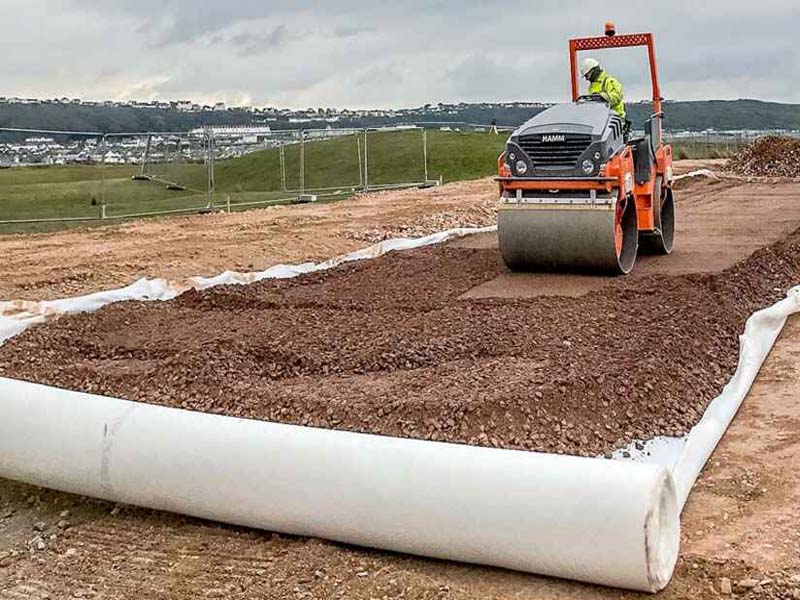
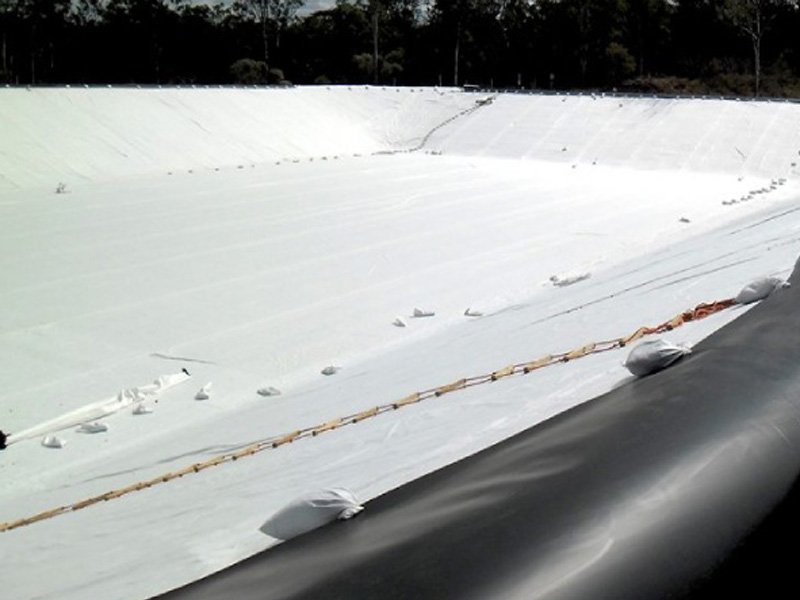
5. How To Install Nonwoven Drainage Fabric?
Installing nonwoven drainage fabric is a critical step in various civil engineering projects to ensure effective water management and soil stabilization. Here’s a detailed overview of the installation process:
5.1 Site Preparation
Before installing the nonwoven drainage fabric, the site must be properly prepared. This involves clearing the area of any debris, rocks, or other objects that may damage the fabric or interfere with its performance. The soil surface should also be graded to create a smooth, even base for the fabric.
5.2 Unrolling and Laying Out the Fabric
The nonwoven drainage fabric should be unrolled and laid out on the prepared site. It is important to ensure that the fabric is placed with the correct side facing up, as some fabrics have a rougher side designed to face the soil. The fabric should be laid out in a manner that minimizes overlapping and avoids stretching or tearing.
5.3 Overlapping and Seaming
If multiple rolls of nonwoven drainage fabric are used, they should be overlapped by a minimum of 6 inches (15 cm) to ensure continuity and prevent gaps. The overlapped sections should be seamed together using sewing, gluing, or other appropriate methods to create a continuous layer of fabric.
5.4 Anchoring the Fabric
The nonwoven drainage fabric should be anchored to the ground using u-shaped staples, soil anchors, or other suitable fasteners. The anchors should be placed along the edges and at regular intervals throughout the fabric to prevent it from shifting or moving during subsequent construction activities or due to environmental factors such as wind or water flow.
5.5 Protection and Maintenance
After the nonwoven drainage fabric has been installed, it should be protected from damage during subsequent construction activities. This may involve covering the fabric with a layer of soil or other protective material until it is ready to be used. Proper maintenance should also be performed to ensure that the fabric remains functional and effective over time.
6. Summary
Nonwoven drainage fabric is vital for managing water and stabilizing soil in civil engineering. It has wide-ranging uses and correct installation is key to its performance and durability.If you have any questions or inquiries, please contact us.

